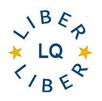Increasing availability, data privacy and copyrights of digital content via a pilot project of the National Library of Finland
DOI:
https://doi.org/10.18352/lq.10169Keywords:
digital collections, research use, availablility, newspaperAbstract
Availability, data privacy and copyrights are topics which the National Library of Finland (NLF) is currently working on to increase the availability of digital content. Currently, in Finland, the digital collection of newspapers, journals and ephemera at the digi.kansalliskirjasto.fi service is available for everyone, where, e.g., newspapers are available for the years 1771-1910. The material after that period is visible in the six legal deposit libraries all over Finland. Researchers, especially, but also other customer segments are demanding better access to digital content. We at the NLF are searching for ways to open the collections to wider audiences. Therefore, we have established a pilot project, where we are experimenting with new modes of operation in opening digital content for education and research. In the pilot project, Aviisi, the participants are media houses, copyright organisations, universities, schools, public libraries, archives, museums and research organisations.
We are creating tailored contract models to improve our responsiveness to copyright and data privacy issues. Beside the contract modes, we are also working with the technical solutions and communicating with the participants about possible ways to utilise digital content. Our objective is that, by the end of the project, we will have clarified legal, technical and availability questions, so that we will be prepared for most common scenarios and can proceed with the pilot projects, and then onwards after the overall success of all our pilot projects.
Currently, we have fifteen pilot projects (hereafter, pilots) running, which cover about 40,000 people in the Mikkeli region, where about 4,000 of those people are directly involved in the pilots as an estimate of students, teachers, researchers or other contact points. In this paper, we will discuss the pilots, how we have approached them to use digital content and attempted to increase the availability to the content overall while honouring the regulations of data privacy and the rights of copyright holders. In the last few months of 2016, as we finalise the project, we will aim to take the learning forward into working models, which will pave the way to further expanding the concept.
Downloads







